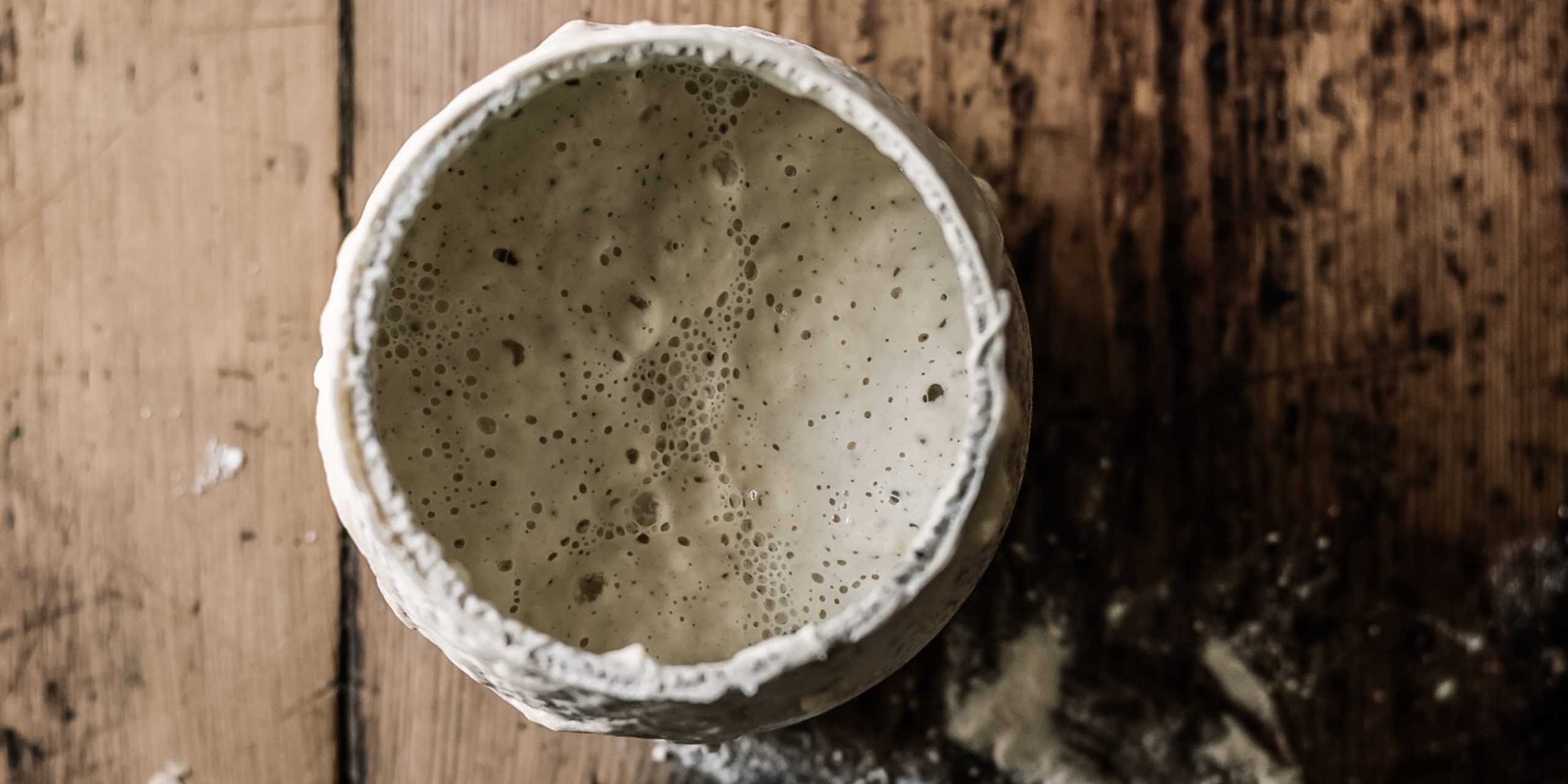Why does my sourdough starter need a second build?

Once you’ve done the first refreshment of your starter, you might be ready to bake something simple, like a tin loaf. However, if you’re planning to bake a more complicated bread, you’ll need to take your starter through a second refreshment, known as a second build starter.
What is a Second Build Starter?
A second build is essentially the next step in strengthening and invigorating your starter to ensure it is strong enough to provide the leavening power needed for breads that require more structure and complexity, like a boule.
Feeding your starter again boosts yeast and bacteria for better fermentation. This second build is crucial for increasing the population of these microbes, making your starter more potent. A well-refreshed starter rises quickly, smells fresh and yogurt-like, and leavens complex breads effectively. You can purchase the ingredients to build your starter here.
Why a Second Build is Important
Undoubtedly a second build boosts the yeast and bacteria but ensures that your starter has enough strength to carry through the entire fermentation process. For a dough that needs to hold its shape and develop an airy crumb, you need a starter that’s at its peak performance. It should be full of lively microbes that can work efficiently to produce gas and help the dough rise. Skipping the second build may lead to dense, poorly risen bread.
When a Third Build Might Be Necessary
If your starter sat for over three weeks, it will need extra care to regain strength. After a long period of inactivity, the yeast and bacteria in your starter will have slowed down significantly. In this case, a third build—another round of feeding—might be necessary.
A third refreshment gives your starter the extra time and nutrients it needs to become fully active again. A strong starter can bake complex breads like a boule or be stored in the fridge for weeks.
Experience and Observation
As you become more experienced with sourdough baking, you’ll learn to recognise the signs of a healthy, active starter. You’ll notice how it looks, smells, and behaves at different stages of refreshment. With experience, you’ll know when your starter needs another build or is ready after one or two refreshes. This intuition helps you adjust to your starter’s needs for better sourdough baking. We can teach you how to develop these skills and make nutritious bread.
Maintaining a Healthy Starter
Keeping your starter healthy is crucial, especially if you’re storing it in the fridge between bakes. A very active starter, refreshed properly, is better equipped to survive longer periods in the fridge. A well-maintained starter revives easily with one or two refreshments, avoiding multiple builds.
 1st Build Sourdough Starter
1st Build Sourdough Starter



